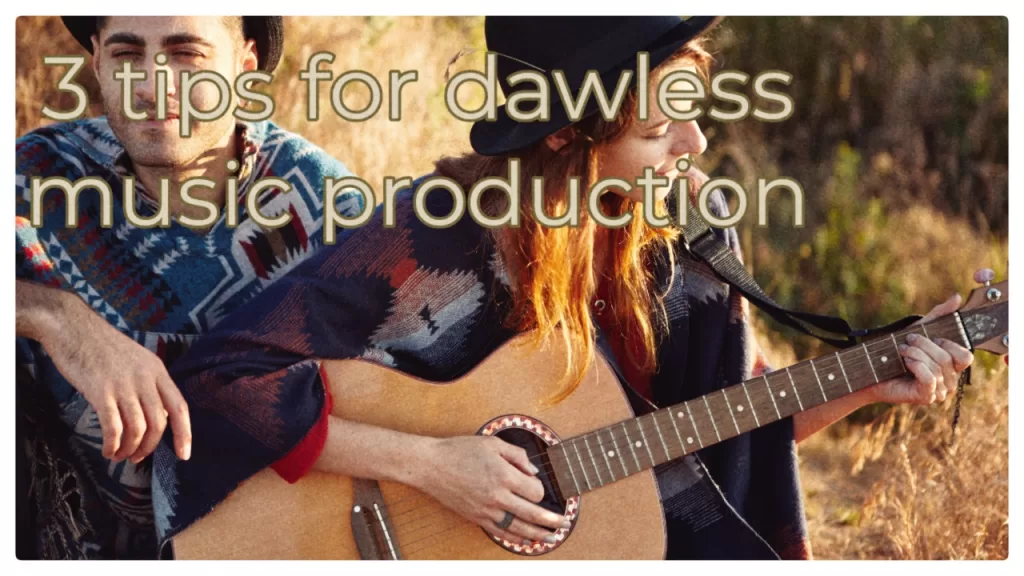Dawless music production is becoming increasingly popular among musicians, thanks to its hands-on approach to creating music. As the good weather runs toward us with the breeze of spring and summer already, let me give you some of my tips. I hope they will help you producing better music.
While traditional DAW-based workflows can be powerful and super flexible, some musicians find that they can be limiting in terms of creativity and inspiration.
Dawless music production, on the other hand, can offer a more spontaneous and intuitive approach to making music. In this article, we will explore some tips and tricks for optimizing your dawless music production workflow. Let’s get started!

If you are into dawless music production, organize your hardware
One of the key challenges of dawless music production is managing the many different pieces of hardware involved. Unlike a traditional DAW-based setup, which can be managed entirely from a computer, dawless music production involves a variety of different instruments and effects processors. To optimize your workflow, it’s important to have a clear understanding of how all these different components fit together.
Also, do not overthink it! Less is more I think. It also pushes me to maximize creativity.
One way to achieve this is to create a clear and consistent signal flow diagram for your setup. Whether you do it in mind or on paper, it does not matter. But worth taking the time and creating a flow that will be kind of your basic flow while working dawless. Experiment on creating beats like this to see the pros and cons of it.
This can help you keep track of all the different connections between your instruments and processors, and make it easier to troubleshoot any issues that arise.
Additionally, it’s a good idea to invest in high-quality patch cables and other hardware components if you can afford. Again less is more, less hardware need less cables – therefore easier to produce high(er) quality music.
Stay creative and motivated
Sounds lame, but pretty important one. After all dawless music production can be tough, especially when you are new to it. To help overcome obstacles, it’s important to find ways to stay inspired and engaged with your music-making process.
A good way to achieve this is to set clear (reachable) goals and objectives for each session. It can be like finishing a song. Creating a mixtape (EP of 4 beats etc.) Or simply jamming to find some good riffs.
Of course make sure to take regular breaks. Over pushing yourself will produce boring beats and burn-out.
Similarly to lofi: embrace the imperfections
Lastly, dawless music production is the potential for imperfections and mistakes. While this can be frustrating at times, it’s important to embrace these imperfections and use them to your advantage.
As an example, you might find that a particular piece of hardware or effect processor has a unique and interesting sound that you can’t replicate in a traditional DAW-based setup. This is super cool already, right? Like finding that beat’s DNA.
Or, you might discover a happy accident during a jam session that leads to a new and unexpected musical idea. Use it up in you mix.
By embracing the imperfections of your dawless music production workflow, you can unlock new creative possibilities and push the boundaries of your music-making process.
At the end dawless music production can be a rewarding and fulfilling way to create music. On the other hand it also presents its own unique challenges.
By following these tips and tricks above (also checking the articles shared maybe) your dawless music production workflow will become better.
You can stay organized, creative, and inspired, and unlock the full potential of your hardware-based music-making setup. Whether you’re a seasoned pro or just getting started, there’s never been a better time to explore the exciting world of dawless music.
Leave a Reply